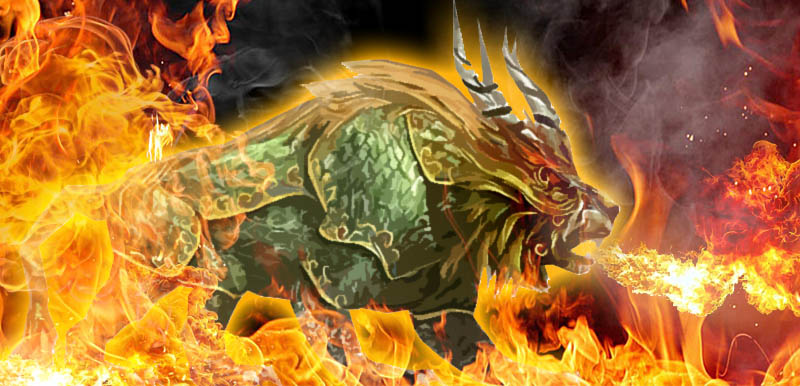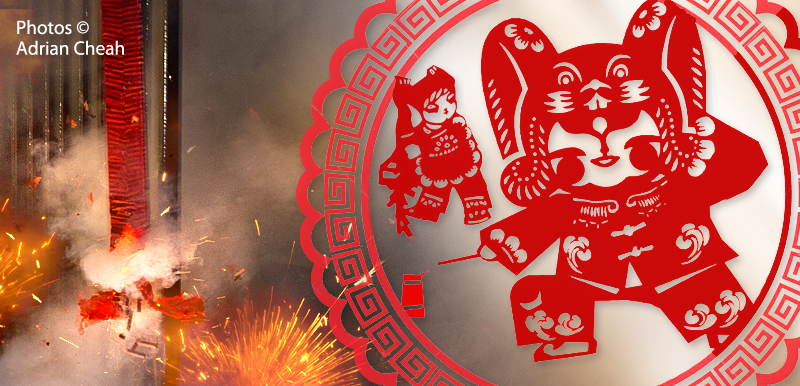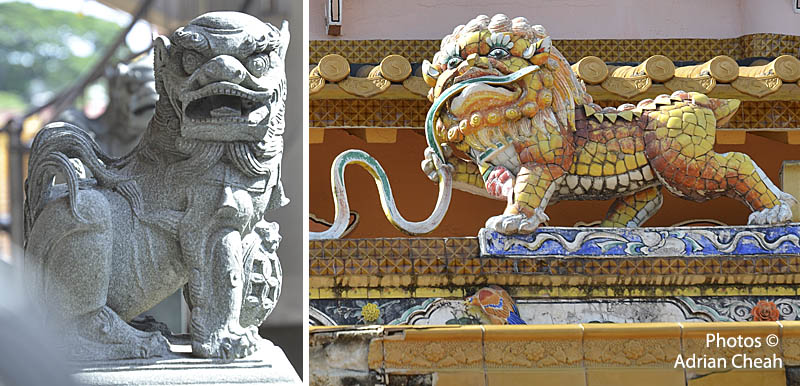The legend of the ferocious beast called Nian

"Nian"' in Mandarin means "year". However, legend has it that Nian was not merely a symbolic representation of the passing year; rather, it was a mythical monster that instilled fear among humans during the New Year. This formidable creature posed such a grave threat that it loomed over the prospect of annihilating the entire human race.
At a loss about what to do, the Emperor sought the counsel of his advisors to devise a strategy for averting this impending calamity. Having devised an infallible plan, the advisors approached Nian and challenged this all-powerful beast to prove of its invincible strength by destroying all other monsters on earth rather than to erase the humans who were obviously no match for it.
Nian took up the challenge and a year later, after its successful conquest, returned to the humans. It was giddy with its newfound power as nothing could stand in its way. Regrettably, its inclination to eradicate the entire human race persisted unabated.

However, just then, some children were playing with firecrackers. The thundering explosions from the firecrackers jolted the beast, causing it to hastily retreat. The humans, taken aback by this unexpected turn of events, erupted in celebration. Since that pivotal moment, spanning generations up to the present day, the tradition of incorporating firecrackers into the Lunar New Year festivities has continued. The enduring belief persists that these explosive displays serve as a deterrent, warding off the lingering threat of malevolent creatures like Nian.

Another version of the story relates that Nian was defeated by an immortal god disguised as an old man who offered the ferocious beast the same challenge as the one above. After defeating the other monsters, Nian returns to the old man.
“Old man, now your time is up and I shall enjoy devouring you!”, declared Nian with a contented smirk.
“Okay, just wait while I remove my clothing. I should taste much better then,” retorted the old man.
However, as the old man calmly began to disrobe, revealing his red undergarments, a wave of terror engulfed the ferocious beast. Unable to withstand the presence of the colour red, Nian fled in fear, ultimately sparing the old man's life.
As the villagers emerged from their hiding places, the atmosphere of fear lifted, and tranquillity returned to the community. Before departing, the immortal, who had revealed himself as the old man, imparted valuable advice to the villagers. He suggested that, as a safeguard against Nian's return, they should adorn their windows and doors with red paper decorations at the conclusion of each year. This precautionary measure, he explained, would exploit Nian's deep-seated fear of the colour red and keep the mythical beast at bay.


The phrase "Guo Nian" which means "Survive the Nian" became "Celebrate the Year"; the word "guo" in Mandarin means both "pass over" and "observe".
As an interesting trivia, red underwear is indeed fashionable among the Chinese community during the Lunar New Year. A popular belief is that those who wear red underwear during this festive period are believed to attract luck throughout the entire year. The auspicious red colour also stands for loyalty, success and happiness in Chinese culture.

The lion was believed to be the only animal capable of inflicting harm upon the voracious Nian. This belief laid the foundation for the lion dance, wherein villagers, inspired by the lion's purported power, sought to mimic its movements in a collective effort to intimidate and drive away the menacing beast.

In Penang, lion dance troupes are engaged during the 15-day celebration of the Chinese New Year. Their mission is to dispel evil spirits and usher in good fortune at various locations, including private homes, business premises, hotels, and shopping complexes. Catch performers showcase remarkable feats of balance by standing on each other's shoulders to reach for an ang pow (a red packet filled with cash) securely fastened to the top of a tall pole.
---------------------------------------------------------
Written and photographed by Adrian Cheah
© All rights reserved
Updated 7 February 2024